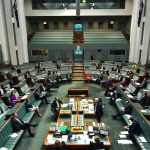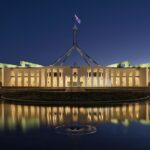Great Barrier Reef: Springvale Station purchase
Environment groups and scientists have hailed the Queensland Government’s recent move to buy a cattle station south of Cooktown as a victory for reef conservation. Max Thomas questions whether the purchase serves a well-planned purpose beyond a mere political one.
The impact of land use in the high rainfall areas of coastal Queensland, especially on the inner segments of the Great Barrier Reef, has been obvious for decades. Nitrogenous residues, fine sediments and releases of highly acidic drainage water are among the threats to marine ecosystems.
Recently, in response to the dairy industry crisis, one commentator suggested in “The Conversation” that dairying is environmentally undesirable and that increasing the production of vegetables would be preferable. I assume that position would be endorsed by many others who would extend it to animal production more generally for ‘environmental’ (and ethical) reasons. The implicit assumption seems to be that intensive horticulture and cropping have negligible environmental impact.
Cropping requires land to be cleared. Some of the environmental management issues that confront producers include: dryland and irrigation-induced salinity and sodicity; nutrient loss, soil erosion, groundwater contamination; soil structure decline; pest plant and animal control; fostering and protecting biodiversity on and around croplands. Some irrigated crops use more water than dairy pasture. Water is arguably over-allocated already with seasonal conditions becoming less reliable. Would new dams or increased groundwater extraction for expanded cropping be acceptable?
Many different agricultural enterprises operate side-by-side within the catchment of the Great Barrier Reef. The potential environmental impacts may not occur until much later than the activity or weather event and at some distance from the source. Practices that limit soil and nutrient losses are conducive to sustainable and profitable agriculture and should be encouraged by education and incentives reinforced by legal sanctions against gross abuse of land.
The Queensland government paid $7m for Springvale Station. Presumably this means that those responsible for the land abuse and damage to the reef have, in a sense, been rewarded. Environment groups applauding this transaction as a “fantastic move” seems a little premature. Even trained seals can clap for reward but this looks like indulgent self-congratulation. It would be absurd to expect governments to acquire every property deemed to be a risk to the environment. But having acquired such land, the record of public land management does not indicate that improvements necessarily follow.
Degraded land by any other name, park or reserve, might serve a political purpose but, in this case, there appears to be no clear plan for the future of the land. I would expect improvement in the quality of water runoff to be gradual and only after very costly, well-planned and executed rehabilitation works.
Encouraging and where all else fails, enforcing, improved land management is an investment in future food security and the environment upon which our general wellbeing depends.

Max Thomas, Dip. Agric. (retired) worked in the public sector and in private consulting on a range of land, water and waste management projects. He prepared guidelines for irrigation with recycled water for EPA Victoria and developed a number of Environmental Management Systems in the water industry.












